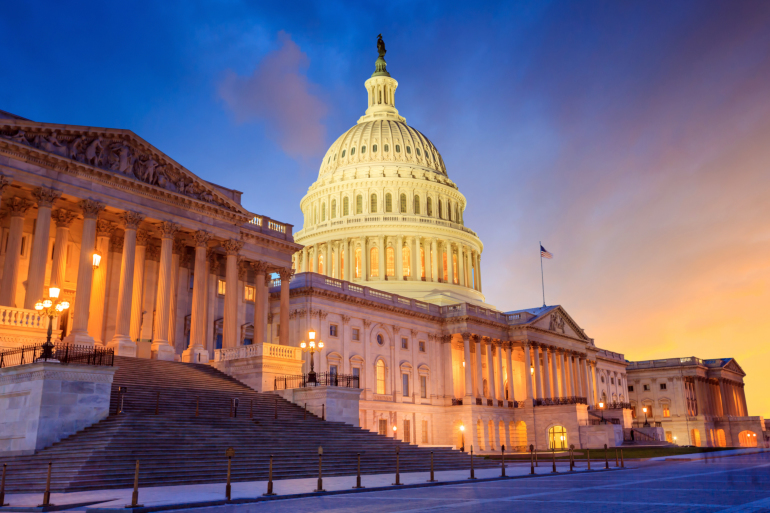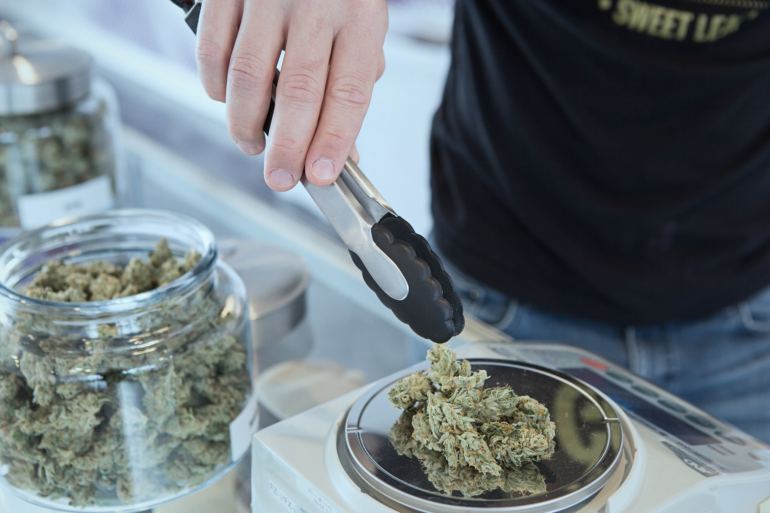Legal Update
Jan 11, 2021
SBA Posts Interim Final Rules Implementing Changes to First Draw and Second Draw Loans under the Paycheck Protection Program
Sign Up for our COVID-19 Mailing List.
Visit our Beyond COVID-19 Resource Center.
On January 6, 2020, the Small Business Administration (“SBA”) issued its much anticipated Interim Final Rules (“IFR”) under the $2.3 trillion coronavirus relief and government funding act, the Economic Aid to Hard-Hit Small Businesses, Nonprofits, and Venues Act (the “Act”), which was signed into law on December 27, 2020. In addition to other provisions, the Act adds $284 billion to the Paycheck Protection Program (“PPP”), establishes changes to the existing PPP, and creates a second draw to the PPP.
This update summarizes the key details of the guidance issued by the SBA.
Changes to Existing PPP; First Draw PPP Loans
1. Eligibility
The Act and IFR expand the set of eligible borrowers under the PPP to include housing cooperatives (but not condominiums), certain 501(c)(6) trade organizations (discussed below), and nonprofit destination marketing organizations, that employ no more than 300 employees.
The Act and IFR also expand the set of eligible borrowers to print, and radio and television, broadcast organizations, both businesses and nonprofits, that employ no more than 500 employees per location (or, if applicable, the size standard established by SBA regulations).
Though the 501(c)(6) trade organizations included are 501(c)(6) organizations generally, professional sports teams or organizations that devote significant activities to lobbying (defined as (i) more than 15 percent of the total activities of the organization, or (ii) more than $1,000,000 during the tax year ended February 15, 2020) are not eligible. Public companies, other than news organizations, and companies that are permanently closed are not eligible for PPP loans under the Act.
Under the first draw PPP, the maximum amount a borrower can borrow is the lesser of (i) $10 million; and (ii) the amount yielded by a payroll-based formula, which is, in general, 2.5 times average monthly payroll costs in 2019 or 2020, less pro rata payroll costs in excess of $100,000.
2. Permitted Uses
The list of permitted expenditures of PPP funds is also expanded. In addition to the uses previously permitted, current and future PPP borrowers are permitted to use PPP funds for certain software, human resources, accounting, property damage repairs related to public disturbances occurring in 2020, and PPE used to comply with health and safety guidelines. Expenses for group life, disability, vision and dental insurance are also included. Note however, that the relative percentages of expenditures required for forgiveness have not been changed, so a borrower must spend at least 60% of loan proceeds on payroll costs to remain eligible for full forgiveness.
Importantly, under the Act and IFR, expenses paid for with PPP loan proceeds are tax deductible, which reversed the IRS position.
3. Loan Forgiveness
PPP loan forgiveness has also been changed in three important ways. First, Economic Injury Disaster Loans (EIDL) advances (which are up to $10,000) are no longer deducted from a borrower’s forgiveness amount.
Second, PPP borrowers can select a covered period that ends at any point between 8 weeks and 24 weeks after loan disbursement, without having to choose between 8 and 24 weeks (although earlier guidance indicated that subject to certain conditions a covered period of less than 24 was permissible).
Third, PPP borrowers with loan amounts up to $150,000 may submit a one-page forgiveness application, without additional documentation. However, borrowers must maintain all relevant documentation.
With the new legislation, Congress and the SBA have addressed many of the concerns of borrowers under the PPP.
Second Draw PPP Loans
The SBA is authorized to guarantee PPP loans under the second draw program established by Section 311 of the Economic Aid Act (the “Second Draw PPP Loans”) under generally the same terms and conditions available under the PPP.
1. Eligibility
a. General Eligibility Requirements
The eligibility requirements for Second Draw PPP Loans are narrower than the eligibility requirements for First Draw PPP Loans. A borrower is eligible for a Second Draw PPP Loan only if: it has 300 or fewer employees; experienced a revenue reduction in 2020 relative to 2019; has received a First Draw PPP Loan, and has used, or will use, the full amount of the First Draw PPP Loan on or before the expected date on which the Second Draw PPP Loan is disbursed to the borrower, and the full amount of its First Draw PPP Loan was spent on eligible expenses; and it is not an ineligible entity.
The revenue reduction requirement may be satisfied by comparing the borrower's quarterly gross receipts for any one quarter in 2020 with the receipts for the corresponding quarter of 2019. If a borrower was in operation in all four quarters of 2019, it is deemed to have experienced the required revenue reduction if it experienced a reduction in annual receipts of 25% or greater in 2020 compared to 2019 and the borrower submits copies of its annual tax forms substantiating the revenue decline.
A borrower that did not experience a 25% annual decline in revenues, or that was not in operation in all four quarters of 2019, may still meet the revenue reduction requirement under the quarterly measurement.
b. Business Concerns with More than One Physical Location
Unlike under the CARES Act, where any single business entity that is assigned a NAICS code beginning with 72 (including hotels and restaurants) and employs not more than 500 employees per physical location is eligible to receive a First Draw PPP Loan, in the case of Second Draw PPP Loans, the limit on employees per physical location is reduced to 300.
c. Affiliation Rules
As a general matter, the same affiliation rules that apply to First Draw PPP Loans apply to Second Draw PPP Loans, with reduced size requirement. Business concerns with a NAICS code beginning with 72 will continue to qualify for the affiliation waiver for Second Draw PPP Loans if they employ 300 or fewer employees. Eligible news organizations with a NAICS code beginning with 511110 or 5151 (or majority-owned or controlled by a business concern with those NAICS codes) may qualify for the affiliation waiver for Second Draw PPP Loans only if they employ 300 or fewer employees per physical location.
d. Excluded Entities
Generally, an entity that is ineligible to receive a First Draw PPP Loan under the CARES Act is also ineligible for a Second Draw PPP Loan. In addition, the Economic Aid Act also prohibits several categories of borrowers from receiving a Second Draw PPP Loan, including an entity primarily engaged in political activities or lobbying activities, certain entities organized under the laws of, or with other special ties to, the People's Republic of China or the Special Administrative Region of Hong Kong, a person or entity that receives a grant for shuttered venue operators under section 324 of the Economic Aid Act, and a publicly traded company.
2. Other Key Terms
- SBA will guarantee 100% of Second Draw PPP Loans and the SBA may forgive up to the full principal loan amount.
- No collateral will be required.
- No personal guarantees will be required.
- The interest rate will be 1%, calculated on a non-compounding, non-adjustable basis.
- The maturity is five years.
3. Maximum Loan Amount
In general, the maximum loan amount for a Second Draw PPP Loan is equal to the lesser of 2.5 months of the borrower's average monthly payroll costs or $2 million. The Economic Aid Act also provided tailored methodologies for certain categories of borrowers, e.g., for borrowers assigned a NAICS code beginning with 72 at the time of disbursement, the maximum loan amount is equal to 3.5 months of payroll costs rather than 2.5 months. In addition, businesses that are part of a single corporate group may not receive more than $4,000,000 of Second Draw PPP Loans in the aggregate. First Draw PPP Loans and Second Draw PPP Loans use the same approach to determining “payroll costs”.[1]
4. Documentation Requirements
The PPP application form was revised on Friday, January 8, 2021. It is available here.
As a general matter, the documentation required to substantiate an applicant's payroll cost calculations is generally the same as documentation required for First Draw PPP Loans. An applicant will not be required to submit additional documentation if such applicant (i) used calendar year 2019 figures to determine its First Draw PPP Loan amount, (ii) used calendar year 2019 figures to determine its Second Draw PPP Loan amount (instead of calendar year 2020), and (iii) submits its application for the Second Draw PPP Loan to the same lender as the lender that made the applicant's First Draw PPP Loan. However, the lender may always request additional documentation, if the lender concludes that it would be useful in conducting the lender's good-faith review of the borrower's loan amount calculation.
For loans with a principal amount greater than $150,000, the applicant must also submit documentation adequate to establish that the applicant experienced a revenue reduction of 25% or greater in 2020 relative to 2019. Such documentation may include relevant tax forms, including annual tax forms, or, if relevant tax forms are not available, quarterly financial statements or bank statements. For loans with a principal amount of $150,000 or less, such documentation is not required at the time the borrower submits its application for a loan, but must be submitted on or before the date the borrower applies for loan forgiveness.
5. Loan Forgiveness
Second Draw PPP Loans are eligible for loan forgiveness on the same terms and conditions as First Draw PPP Loans, except that Second Draw PPP Loan borrowers with a principal amount of $150,000 or less are required to provide documentation of revenue reduction if such documentation was not provided at the time of the loan application.
Seyfarth is actively monitoring all aspects of federal COVID-19 business stimulus funding legislation. Additional updates will be provided guidance becomes available is published. Visit our Beyond COVID-19 Resource Center for more information.
[1] Subsection(B)(4)(g) of the Consolidated First Draw PPP IFR provides: “What qualifies as "payroll costs? Payroll costs consist of compensation to employees (whose principal place of residence is the United States) in the form of salary, wages, commissions, or similar compensation; cash tips or the equivalent (based on employer records of past tips or, in the absence of such records, a reasonable, good-faith employer estimate of such tips); payment for vacation, parental, family, medical, or sick leave; allowance for separation or dismissal; payment for the provision of employee benefits consisting of group health care or group life, disability, vision, or dental insurance, including insurance premiums, and retirement; payment of state and local taxes assessed on compensation of employees; and for an independent contractor or sole proprietor, wages, commissions, income, or net earnings from self-employment, or similar compensation.” Subsection(B)(4)(h) of the Consolidated First Draw PPP IFR provides:
“h. Is there anything that is expressly excluded from the definition of payroll costs? Yes. The Act expressly excludes the following: i. Any compensation of an employee whose principal place of residence is outside of the United States; ii. The compensation of an individual employee in excess of $100,000 on an annualized basis, as prorated for the period during which the payments are made or the obligation to make the payments is incurred; iii. Federal employment taxes imposed or withheld during the applicable period, including the employee's and employer's share of FICA (Federal Insurance Contributions Act) and Railroad Retirement Act taxes, and income taxes required to be withheld from employees; and iv. Qualified sick and family leave wages for which a credit is allowed under sections 7001 and 7003 of the Families First Coronavirus Response Act (Public Law 116-127).”



